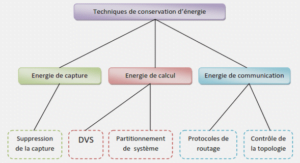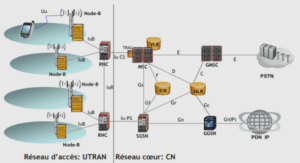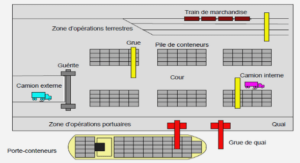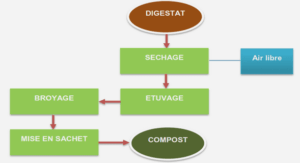Structural study of Gilbertiodendron dewevrei mono-dominant forest
INTRODUCTION:
Tropical rainforests are among to the most diverse terrestrial ecosystems of the world (Borah 2016), but they also contain zones which are dominated by a single species (mono-dominant forests). These zones pose a great enigma in tropical ecology. The mono-dominance leads to a change in the vegetal composition of the forest in which sun-loving species dominate (Fonty 2011). The high diversity of tree species, which is characteristic for tropical forests, is as well a permanent source of scientific questions as a strong constraint to improve our knowledge of the functioning of the forest ecosystem. The answers explaining the preservation of this diversity oppose the deterministic or stochastic mechanisms maintaining this high diversity (Blanc et al. 2003). However, in tropical rainforests, there are areas of low diversity too (Richards et al. 1952), where the canopy trees are dominated by one species (Richards et al. 1996). When this species reaches 50% of the relative diversity, it is considered to be a mono-dominant species (Hart et al. 1989), single-dominant Forest sensu (Connel et al. 1989).
METERIALS AND METHODS:
Study site,
Our study was performed in the Masako Forest Reserve, which is located about 14 km northeast from the city of Kisangani (DRC) on the old road towards Buta (0° 36′ 30.4″ N 25° 15′ 38.9″ E) at an altitude of about 500 m (Sonké 1998). It covers an area of about 2,104 ha of which is occupied by primary forest (Northeast) and at least 2/3 by secondary forests (Northwest). The area was visited during three field trips of ten days (March, April and May 2009). The structure of mature individuals (dbh 30 cm) and dominant species (depending on the distribution of tree frequencies classes and the diameter structure) are aspects that have been selected to meet our goal: understanding the particular physiological nature of the primary G. dewevrei forest in Masako, as these aspects allow the easy identification of the balanced state of a plant formation. Location of the transect The transect was traced in the Masako monodominant G. dewevrei forest with the main axis directed in a NS direction and reaching 5 km from the camp site. The forest area was divided into plots and transects arranged to pass through a series of tributaries to characterize and visualize the key areas in the various topographical conditions (Mboengongo 1999). Description of the transect Along the 2,100 m main axis of the transect, we drew 500 m long perpendicular lines at 100 m intervals, giving a total of 12 lines (Fig. 1). Along these lines, random plots were selected to survey for G. dewevrei. Each of these plots measured 50 × 50 m (2,500 m2 ). Data collection All trees with dbh ≥ 30 cm were surveyed and their coordinates (x,y) within the plot, their diameters at a height of 1.30 m above the ground (= breast height [dbh]) were registered. Data analysis The structure diversity is defined by a set of parameters (plant diversity, density, distribution, vertical distribution, etc.) and dimensions in the plots as well as by the relationships that may exist between these parameters. The latter were calculated using the model proposed by (Makana 1989, Gillet et al. 1991). Besides of these quantitative analyses, biodiversity indices were also calculated.
RESULTS AND DISCUSSION:
The Gilbertiodendron dewevrei dominate the sample with 75%, followed by the Anonidium mannii and Trilepisium madagascariensis with 3% each, followed by the Funtumia africana with 2%, Klainedoxa gabonensis (1%) and other species are each represented with 16%.Stocking densities of individuals in the Masako G. dewevrei mono-dominant forest The 3 ha sample area in the Masako G. dewevrei mono-dominant forest contained 259 trees with dbh ≥ 30 cm. On average, there were 86.3 trees per ha. Of these trees, 190 belonged to G. dewevrei, giving an average per hectare of 63.3. Quantitative analysis of the floral data The global basal areas for the Masako G. dewevrei mono-dominant forest is 29.5 m²/ha and 24.2 m²/ha for G. dewevrei individuals. The species abundance in the G. dewevrei mono-dominant forest at Masako.
The current study indicates that the dominant species at Masako are: Gilbertiodendron dewevrei, Musanga cecropioides, Anonidium mannii, Trilepisium madagascariensis, Funtumia africana, Klainedoxa gabonensis, Petersianthus macrocarpus and Panda oleosa.
Vegetation structure by diametric class:
The diameter distribution of all species combined (total structure) is one of the stand’s characteristics reflecting an equilibrium constant, which is the existence wherever moist evergreen forests are in their original state (Fournier et al. 1983). To highlight the disturbed state of forest plant community proposed a structural analysis for the species that account for the unbalanced or balanced state of the forest.
Diversity indices:
The alpha (α) diversity was calculated using the following indices: Shannon-Wiener, Menhinick, Margalef and Simpson. This allows assessing the diversity of each group, according to the species distribution, more accurately. Margalev index gives the highest value (6.299). This shows that the Masako G. dewevrei monodominant forest is more diverse in species. It has a good evenness between the species studied. This demonstrates the dominance of the G. dewevrei forest on others in terms of species richness. The Simpson index, meanwhile, shows that the diversity of sites is not so variable because the value obtained (0.458) represents a very low diversity. On the other hand, the Menhinick index, which is based on species richness, presents a distinctly lower value (2.237) relative to Margalef index, where the number of individuals is relatively low. Comparing the Menhinick index with the one from Margalef reveals that both indices almost evolve in the same way. There is a minor difference at the species level, where the Margalef index results in higher values if there is a higher number of individuals, while that of Menhinick is low. In the current study, the Shannon index is relatively low as it represents the sum of the information given by the frequency of the various species over the 3 ha sampled surface.
Quantitative analysis of the floral data revealed that the global basal areas for the Masako G. dewevrei monodominant forest is 29.5 m².ha-1 and 24.2 m².ha-1 for G. dewevrei individuals. For the Yoko forest, Masiala (2009) calculated these as 24.4 m².ha-1 and 22.7 m².ha-1 , respectively. This allows us to hypothesise that the forest at Yoko is still evolving and that this is no longer the case for the forest at Masako, which also has a much more disturbed character. By comparing the species abundance in the G. dewevrei mono dominant forest at Masako with the work of other researchers, the current study indicates that the dominant species at Masako are: Gilbertiodendron dewevrei, Musanga cecropioides, Anonidium mannii, Trilepisium madagascariensis, Funtumia africana, Klainedoxa gabonensis, Petersianthus macrocarpus and Panda oleosa. At Yoko, Masiala (2009) found the dominant species to be: Gilbertiodendron dewevrei followed by Scorodophloeus zenkeri, Julbernardia seretii, Gilbertiodendron kisantuensis and Grossera sp. In the forest of Uma, Katembo (2013) found that the dominant species are: Gilbertiodendron dewevrei (29%), followed by Cola griseiflora (8%), Diospiros sp (6%) and other species. The species composition varies from site to site.
CONCLUSION:
The current study has focused on the forest structure of a Gilbertiodendron dewevrei monodominant forest based on tree species in the Masako Forest Reserve. An inventory of the mature trees (dbh ≥ 30 cm) was made on a 3 ha area, which was composed of 12 plots of 50 × 50 m each, where all trees meeting this condition were surveyed. o In the 3 ha sample area, 259 meeting the dbh condition were registered. The number of trees is 259 for the forest G. dewevrei in 3 ha. Trees belonging to the Fabaceae family were found to be the most commonly occurring group (85% of species). o The results showed that the overall tree density is 83.3 stems/ha and 63.3 stems/ha for G. dewevrei. o In the forest, the overall basal area is 29.5 m².ha-1 and for G. dewevrei this is 24.2 m².ha-1 . o The vegetation was classified in eight diameter classes: 3039.9 cm; 40–49.9 cm; 50–59.9 cm; 60–69.9 cm; 70–79.9 cm; 80–89.9 cm; 90–99.9 cm and ≥100 cm. o As illustrated by the high values for the variance coefficient (exceeding 30%), the diametric distribution is heterogeneous for both the overall sample and G. dewevrei alone. Regarding the distribution of the number of trees over the sampled plots, the variation coefficient has values between 15 and 30 %, indicating that the forest is relatively homogeneous. Additional research is needed to find ways to stop the decrease and to determine measures enabling to prevent the forest overexploitation.
|
Table des matières
INTRODUCTION METERIALS AND METHODS Figure 1 RESULTS AND DISCUSSION CONCLUSION
![]() Télécharger le rapport complet
Télécharger le rapport complet






